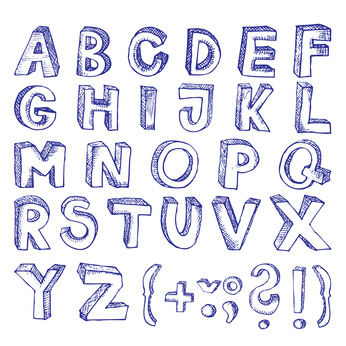Essay Writing: The Modern Guide
What is the number one thing most students fear the most? There are several things that come in a close second, but number one probably goes to essay writing.
Writing an essay seems like such a daunting task. However, there is absolutely no reason why you should fear, dread, despise, loath, procrastinate, or avoid this activity. It really isn’t that bad!
Here is proof. The entire essay writing process is comprised of seven steps. No matter what the purpose of your composition, all essays follow the same basic structure. Master the structure and you can do anything.
Plus, in this day and age, there are technological tools to help you with just about anything – essay writing is no exception.
Historically, there have been many great essays written by candlelight. There should be no excuses for students who have access to modern technologies and still fail to deliver quality papers.
Here are the seven steps in the essay writing process and ample tools to help you succeed.
1. Choose a Topic
Often times, the topic of the essay will be assigned. If this is the case for you, don’t rush off to step number two. You aren’t ready yet.
Determine which type of essay you are supposed to be writing. Will you be composing a general overview or a specific analysis? If you will be penning a general overview, you can probably scamper off to number two now.
 If you are writing a specific analysis, make sure your topic is…specific. If you have started with something too broad, narrow it down to a manageable subtopic.
If you are writing a specific analysis, make sure your topic is…specific. If you have started with something too broad, narrow it down to a manageable subtopic.
If the topic has not been assigned, think about the purpose of the essay. What do you want to do – persuade, inform, instruct? If you intend to educate your audience, you had better choose a topic on which you are well informed. If you are trying to persuade the readers, you’ll need to have at least a little enthusiasm for the subject.
Brainstorm various topics that are of interest to you. After you have a pretty extensive list, go back and analyze the potential of each. If nothing on your list strikes your fancy, try thinking of a few more topics. Or pick one and give it a whirl. You might find it is a better topic than you originally thought.
Modern tools to take advantage of:
If you are struggling to think of topics, go searching for inspiration. Check out the most popular blogs in the subject matter you are considering. What are the most viewed/shared/commented on articles? What are other people passionate about? Do you share their same interests?
Twitter is more than just a social network. It can also be a valuable tool for students:
- What are the trendiest hashtags right now? Can you find a controversial/hot/debatable topic to write about?
- Use Twitter to communicate with your professor in real-time. Do you have a topic idea that needs approval? Do you need clarification about the assignment? Do you want to analyze the angle you have chosen? Send a tweet.
2. Research the Topic
If you have a pretty thorough understanding the topic, conducting research shouldn’t be difficult. You’ll already have an idea of where to look for credible sources.
If you don’t know where to begin, don’t worry. There’s an app for that.
Modern tools to take advantage of:
We all know the internet is a massive source of information. Wading through all the nonsense is sometimes quite daunting. And when you want to hurry up and get this writing assignment done, you don’t want to waste time on unreliable sources.
Try limiting Google’s results by using a modifier. For example, if you are writing your essay on the culture of El Salvador, you could type the following in the search engine:
- “El Salvador” site:.edu
This will limit the results to sites that end with .edu – which are reserved for colleges and universities.

You can also search exclusively in Google Scholar. This will yield only scholarly literature – articles, books, abstracts, court opinions, etc.
As you poke around online, you’ll want to keep track of your findings. Citelighter is a great research app. Simply highlight the information you want and tell the toolbar to capture it. In addition to saving the valuable information, the app will also log the pertinent bibliographical information too. Once you have stored all this information to your account, you can access it from anywhere.
Again, turn to Twitter as a quick and easy source of information:
- Look for historical or influential people (authors, scientists, researchers) in the subject area you are writing about. See if you can gather valuable opinions or biographical information. Request an interview.
- Check out local organizations, government officials (state, national, local), and corporations.
- Follow helpful news streams.
- Connect with libraries. Ask for information and tips if you get stuck.
- If your essay corresponds to a specific geographic area, connect with local residents.
- Connect with other students who are writing on the same subject. Start your own hashtag.
3. Organize Your Thoughts
As you conduct your research, it is best to organize it somehow. Otherwise, you’ll have a huge stack of random pages and various snip-its of cut and pasted information without any logical structure.
The two most popular methods of organizing data are using an outline or a diagram.
Don’t fret too much when you are at the organizing stage. There is a very real possibility the structure will change once you sit down to write. Right now, all you want to do is group your thoughts with the corresponding supportive evidence.
Modern tools to take advantage of:
For desktop applications, you have several options.
- Microsoft OneNote has been dubbed by many as Microsoft’s best product. It utilizes a drag and drop feature that makes outlining a breeze.
- OmniOutliner is a comprehensive, easy-to-use, innovative outlining tool for OS X. In addition to creating outlines, you can input data at corresponding levels.
- FreeMind is a great mind-mapping application. This diagram method is a great alternative for those who think more visually than the standard outline allows.
If you are on the go, try one of these mobile mind-mapping apps:
- For Apple, check out Mindo, Popplet, or SimpleMind+
- For Android, consider Mindomo, Mind Map Memo or MindBoard
4. Compose Your Thesis Statement
The thesis statement tells the readers what the essay will be about. It will also give readers an idea as to what position you are taking.
A thesis statement has two parts; the first part states the topic and the second part states the point.
- El Salvador’s culture (topic) has a rich history (point)
- Gun control (topic) should be regulated by the states (point)
Modern tools to take advantage of:
There are various thesis generators online. These sites will help you devise the most effective thesis for your topic. You can write a general thesis or a thesis for a persuasive argument.
5. Write the Essay Body Paragraphs
You’ll note we skipped over the introduction. Have no fear. We didn’t forget it. We’ll come back to it.
Start with the body of the essay. This is where your topic is explained, described and argued. Each main idea will have its own paragraph.

Fortunately, each paragraph has the same basic structure. Once you have mastered the general idea, it will be easy to replicate over and over until all your points have been explained.
Start with the main idea of the paragraph. Then, list each supporting idea underneath. Leave a few blank lines in between each supporting idea. The bare-bones of your paragraph should look something like this:
(Main point) One of the driving forces behind El Salvador’s rich culture is their unique cuisine.
(Supporting idea #1) Salvadorans rely heavily on the produce they grow on their farms as staples of their diet.
¶
¶
(Supporting idea #2) Many Salvadoran dishes revolve around low-cost ingredients.
¶
¶
(Supporting idea #3) With long commutes and 10-hour work days, food must be easy to eat on the go.
¶
¶
Once you have all our supporting ideas laid out, go back and elaborate on each. This is where you provide a more detailed explanation and discussion of each point.
Once you have finished with the first paragraph, go on to the next. And the next. And the next.
Modern tools to take advantage of:
If, at the earlier stages, you chose not to take advantage of the various apps and tools, now might be a good time to give one a whirl. This particular writing tool takes you from “devising a thesis” through “creating an outline” and deposits you at “developing each paragraph.”
While you are writing, it would be handy to keep a dictionary and thesaurus handy. No, we aren’t referring to those thick, dusty volumes that line the shelf of the library’s resource section. Naturally, we are referring to a more modern tool.
Download the Advanced English Dictionary and Thesaurus app for your iPhone – its free!
6. Write the Introduction and Conclusion
You are almost done! The end is in sight! Congratulations! Don’t give up now; you can do it!
When writing the introduction, you’ll want to grab the reader’s attention. You can do this with one of four techniques:
- Startling Information – Share an interesting, true, verifiable and surprising bit of information. Follow up with a few sentences that elaborate the point.
- Anecdote – Use a story to illustrate the point you hope to make. Keep it short and get right to the point.
- Dialogue – Share two or three exchanges between speakers; give the reader a sample of what is to come. Elaborate the idea in the next few sentences.
- Summary – Offer a few sentences to introduce your topic. Start with the general ideas and gently lead to a more specific point.
Finish your opening paragraph with your thesis point.
After dotting the I’s and crossing the T’s of the introduction, move on to the conclusion. This is where you give the reader some closure. You’ll want to summarize the points and provide a few lasting thoughts.
There isn’t a set formula to follow. Simply highlight the main ideas – without restating them verbatim – and share your feelings one last time.
Modern tools to take advantage of:
When you get to this stage in the writing process, you might be burned out. You might feel like it is impossible to finish. All you want to do is get some words down on the page and call it a day.
If you are feeling a lack of focus, try this writing app. It was specifically designed to eliminate distractions – no spell checkers, no auto-correction, no toolbars.
7. Edit
Now it is time to add the finishing touches.
Go back and read through your paragraphs; you might need to rearrange them. You’ll want your strongest paragraph to be first, you second strongest paragraph to be last, and your weakest paragraphs in the middle.

After you have done this, take a little break. Come back in a few hours and look at it again. Does everything still make sense? Are there any points you can improve upon? Do your sentences move from one cohesive thought to the next? Do you need to add some words or phrases to connect them better?
Go back through your essay one last time. Pay special attention to grammar and punctuation.
Lastly, double check the assignment. Make sure you have formatted it to your professor’s specifications – margins, additional information (date and name), spacing, etc.
Modern tools to take advantage of:
Do you struggle with grammar? Luckily, there’s an app for that. This grammar app covers everything from parts of speech to articles and tenses to active and passive verbs and everything in between.
Templates for Pages can help you format your essay in the proper style – APA, MLA or other. If you have the Pages for iOS app, you can access over a 150 different templates with the touch of a button.
If all else fails, head back to Twitter. He is how the social network can help you at this stage of the game:
- Ask questions. Put your queries out there for anyone in the Twitter universe to answer. Or specifically target other classmates who might be struggling with the same thing.
- Get encouragement. When you are in the home stretch, you might need a few positive words of wisdom to get you to the finish line. Twitter is more than capable of providing that for you.
There you have it! Seven simple steps to get you from start to finish. That wasn’t so bad now, was it?! If all the greats before you managed to do the same with quills or typewriters, you can surely master the process with apps and downloadable software!